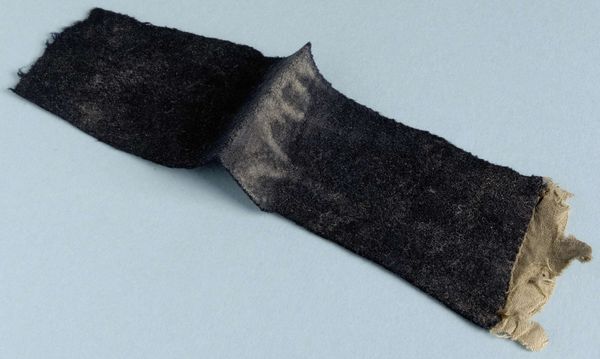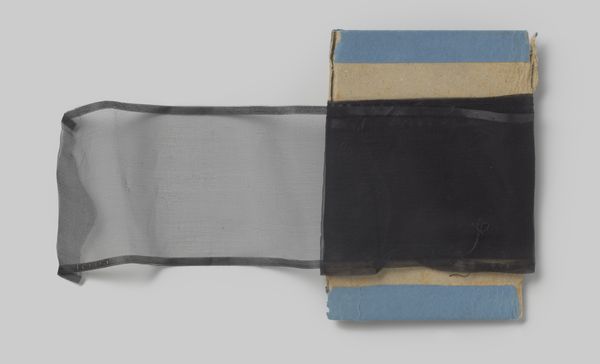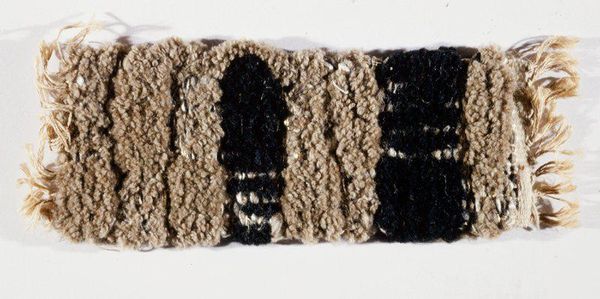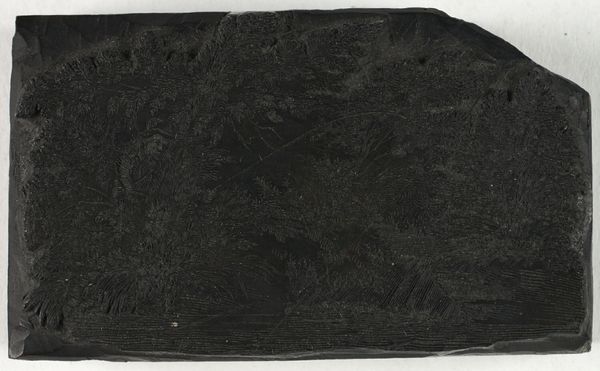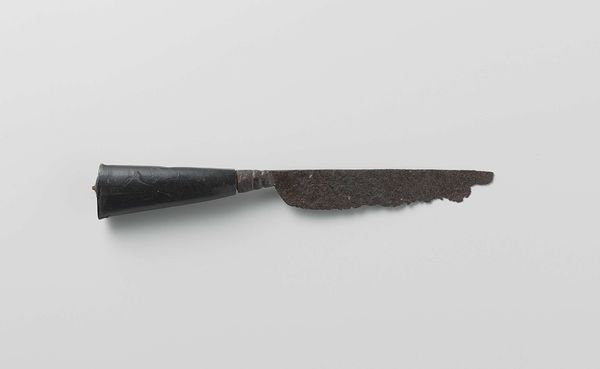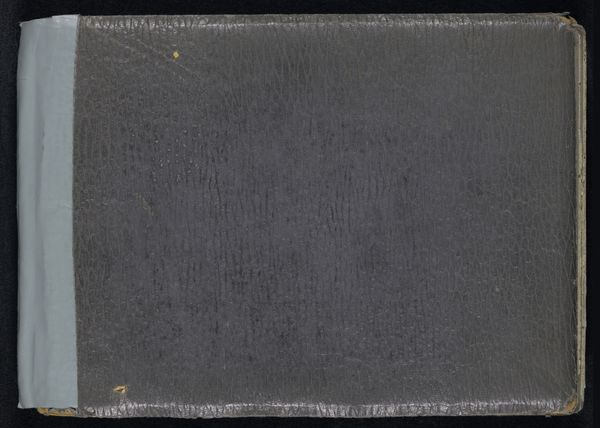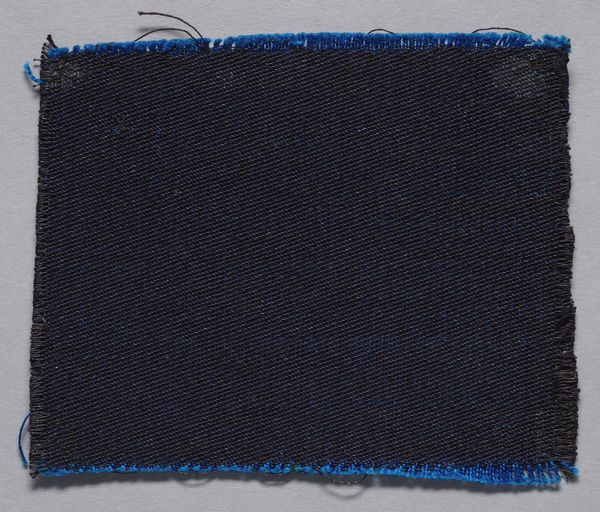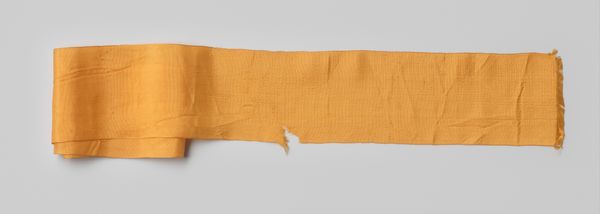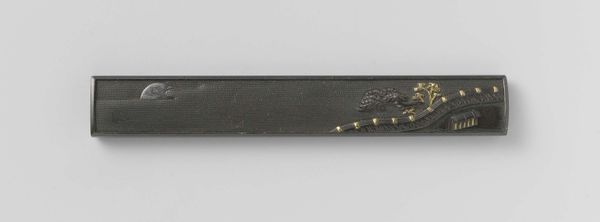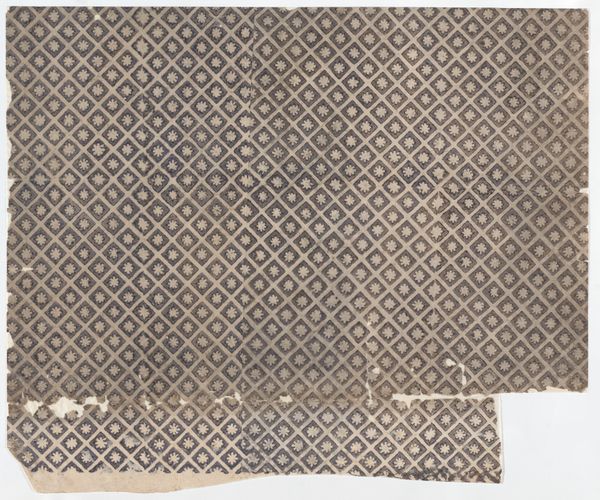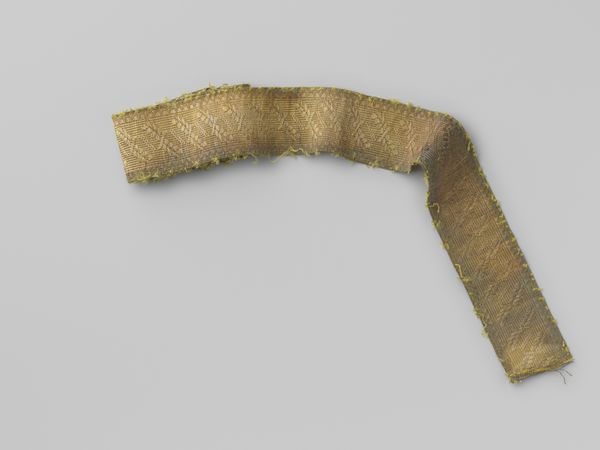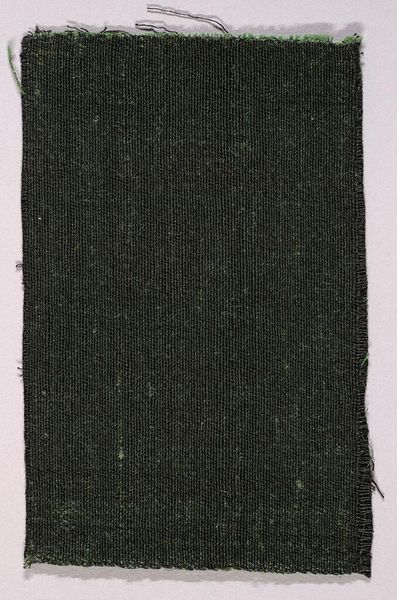
mixed-media, textile
#
mixed-media
#
textile
#
history-painting
#
realism
Dimensions: length 12.1 cm, width 4.3 cm, height 6.5 cm, width 45.5 cm, depth 32 cm
Copyright: Rijks Museum: Open Domain
Curator: Here we have, on display, a fragment entitled, “Stuk laken van de uniformrok van Van Speyk”, dating back to before 1835. Editor: It looks like a simple torn piece of dark cloth, almost mournful in its starkness. What’s the story here? Curator: This textile remnant is, as the title suggests, a piece of the uniform skirt worn by Dutch naval hero Jan van Speyk. He famously blew up his own ship in 1831 rather than surrender to Belgian insurgents. Editor: So, a fragment representing a massive event and even bigger ideals. I am intrigued by the textile itself, the visible wear. Was this common wool for naval uniforms at the time, what are we really seeing here? How were these garments constructed and by whom? Curator: The type of wool would certainly speak to Dutch naval production and its integration within the country’s textile industry. Symbolically, though, this scrap embodies the explosive act, the destruction becoming part of Van Speyk’s mythology. Look at that burnt spot too; an artifact carrying both physical and symbolic weight. Editor: Precisely! Its torn and burned edges, evidence of destruction, become part of the narrative. But also who was the tailor? Or did sailors do their own repairs? Thinking about the labor gives me insight to Dutch culture in a more materialist way than through national mythologizing. Curator: The tailoring, though unknown to us now, certainly played a role in defining status and uniformity within the navy. Yet, the choice to preserve *this* ragged piece also indicates a shift in symbolic understanding; what once was ordinary fabric is elevated to relic status through violent, historical drama. The symbolic value now eclipses its humble origins as utilitarian cloth. Editor: Indeed. This ordinary cloth speaks of not only its owner's heroism, but also to its production, to those less celebrated makers, the tailors and laborers whose hands shaped the very fabric of Dutch naval identity. Curator: A relic of personal sacrifice transformed by collective memory. Editor: The poignancy of the fabric’s damage as index. Curator: From worker’s hands to symbolic fragment.
Comments
No comments
Be the first to comment and join the conversation on the ultimate creative platform.
